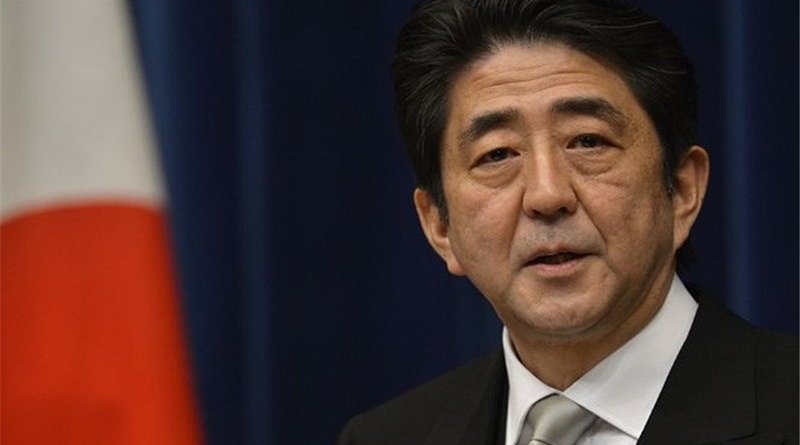Shinzo Abe: Architect Of A New Japan And The Indo-Pacific – Analysis
By IPCS
By Dr. Sandip Kumar Mishra
As a leader, Shinzo Abe elicited extreme emotions in Japan and across the world. During his lifetime, there were people who loved him for being Japan’s saviour and a bulwark against China’s assertiveness. There were others who despised him for his populist, ultra-nationalist stance, and for making military conflict a constant flashpoint in the region. His leadership and vision were quite remarkable because of their boldness, audacity, and dynamism.
Despite health issues, he continued to actively work to fulfil his vision, and eventually became the longest serving prime minister of Japan. He made a sudden decision to resign from the primeministership in August 2020 due to a further deterioration in his health, but remained an important political figure in Japan until the end. He was assassinated in a tragic incident on 8 July 2022, just two days before the elections to Japan’s upper house. His legacy will live on, both in Japan and in the world. The flood of condolences from world leaders after Shinzo Abe’s death has only served to illuminate the extent of his political influence within Japan and across the globe. Indeed, it would not be an exaggeration to say that hardly any political figure in Asia has received such centrality in the regional discourse, especially in contemporary times. You could agree or disagree with Abe’s ideas and initiatives, but you could not ignore him.
In domestic politics, Abe represented an ‘idea of Japan’ that was quite a departure from the ‘idea of post-war Japan’. He pushed the country to be unapologetic about its imperial era and sought for it to become a ‘normal state’. He tried to change Japan’s pacifist image as reflected in its Constitution, particularly focusing on an amendment to Article 9, which prohibits Japan from maintaining its own military. He was ultimately unsuccessful in this endeavour, but was able to change the notion of collective self-defence while creating a political environment in which debates on Article 9 and its ramifications weren’t taboo.
Abe wanted to take Japan beyond the soft power image of an Official Developmental Assistance (ODA) partner and project it as a militarily strong nation with its own strategic goals. At a time when Japan was witnessing great political instability and prime ministers were coming and going like an endless game of musical chairs, Shinzo Abe provided much-needed political stability. Furthermore, through his Abe-nomics, he tried to instil hope in Japan that two decades of economic stagnation might be overcome. Even though Abe-nomics ultimately failed to have the desired results, it was brought back hope to the Japanese. The Liberal Democratic Party (LDP) of Japan received a new lease of life under his leadership, and even in his absence, the goal and orientation of Japan and the LDP remain highly influenced by Shinzo Abe’s ‘idea of Japan’.
Even in regional politics, Shinzo Abe almost single-handedly propagated and propelled a new, distinct architecture. In the age of an assertive China and a declining US in regional politics, when most regional players were trying to play safe and distance themselves from great power rivalry, Shinzo Abe offered the idea of the Indo-Pacific strategy. It gradually became a buzzword in contemporary geopolitics. When Abe first talked about the confluence of the Pacific and Indian Oceans in 2007 in a speech in the Indian parliament, it was considered a far-fetched idea. He consistently tried to reach out and involve countries like India and Australia along with the US in his ideas for the Indo-Pacific. Japan may well have decided to be a dormant player in the wake of US-China rivalry, but for Shinzo Abe, it was important that Japan should contest China’s assertiveness. He was, to an extent, successful in persuading other regional countries to share his vision. Apart from the Indo-Pacific strategy, Shinzo Abe was also the lynchpin in the realisation of the Comprehensive and Progressive Agreement for Trans-Pacific Partnership (CPTPP) despite non-cooperation from the US President Donald Trump. Shinzo Abe also announced an ambitious Asia Africa Growth Corridor (AAGC) with India in 2015, which was supposed to be an alternative to China’s Belt and Road Initiative (BRI).
Shinzo Abe’s legacy is overwhelming, even though debate on its long-term consequences for Japan and the region might continue. His untimely death is unfortunate, and it will be difficult to suitably replace his leadership. Nonetheless, his legacy will continue to shape Japanese politics and regional strategic equations in the near future. Indeed, there is already speculation that his ideas will gain more power in the face of his demise, rather than fading away.
*Dr Sandip Kumar Mishra is Associate Professor, Centre for East Asian studies, SIS, JNU, & Distinguished Fellow, IPCS.

